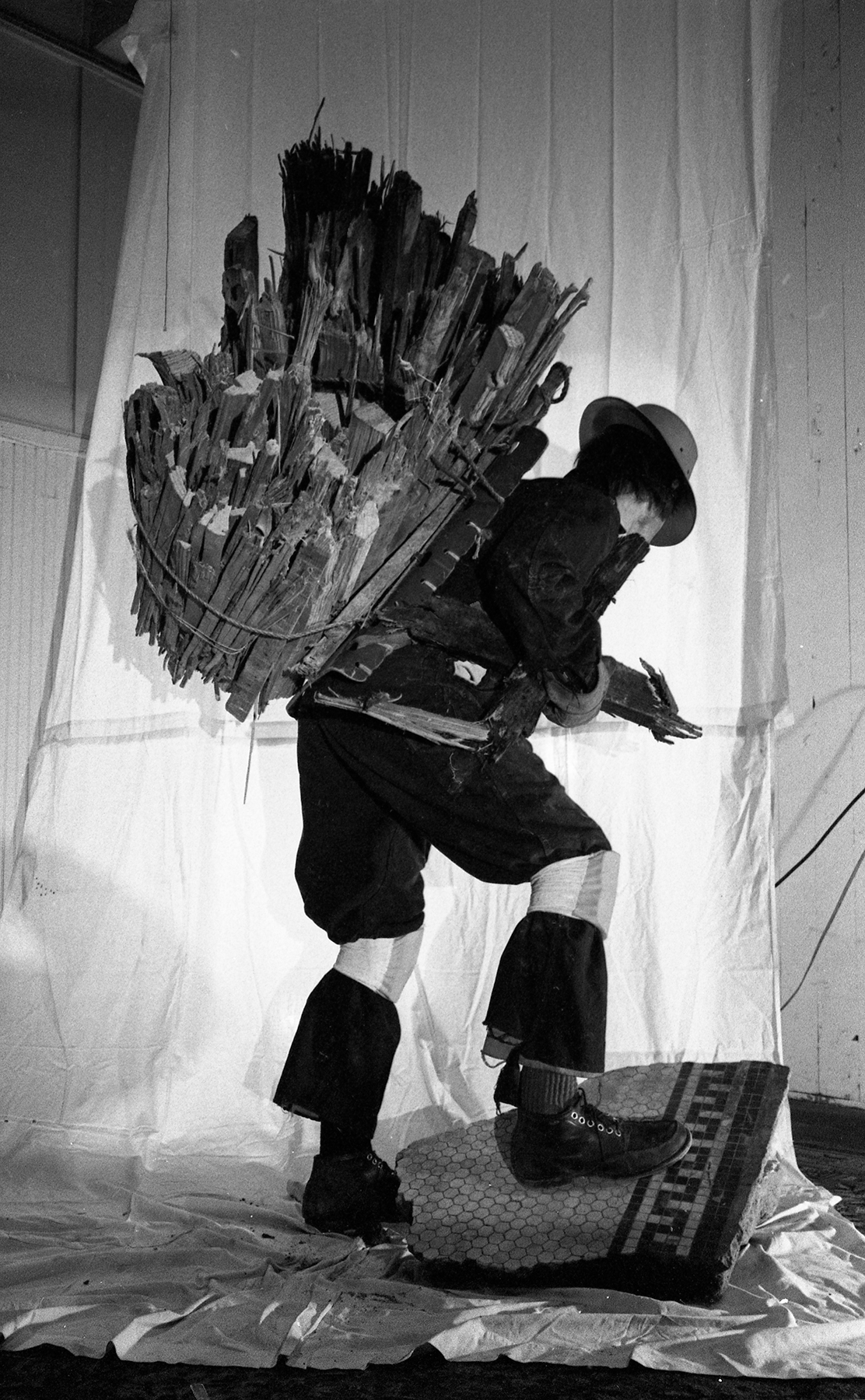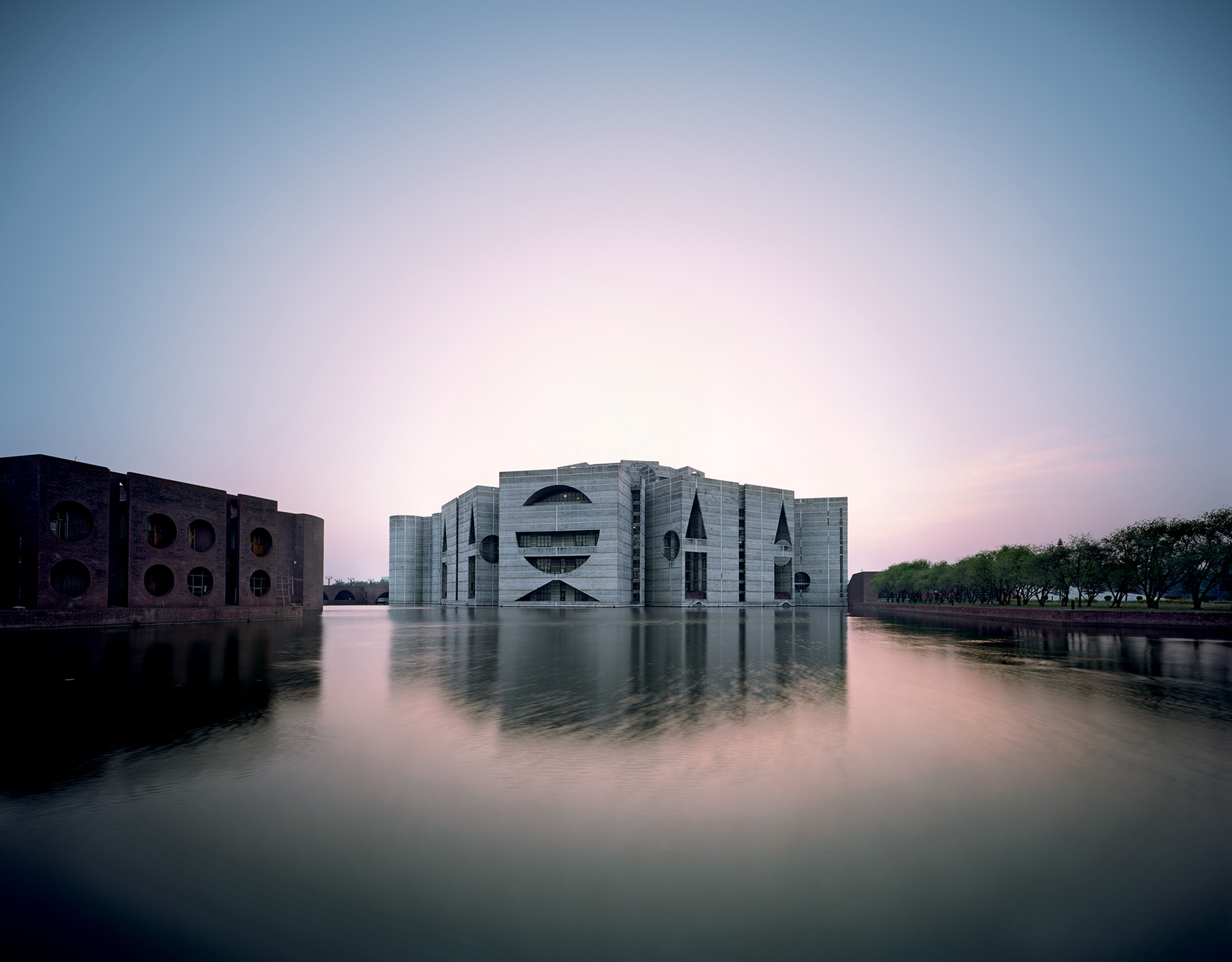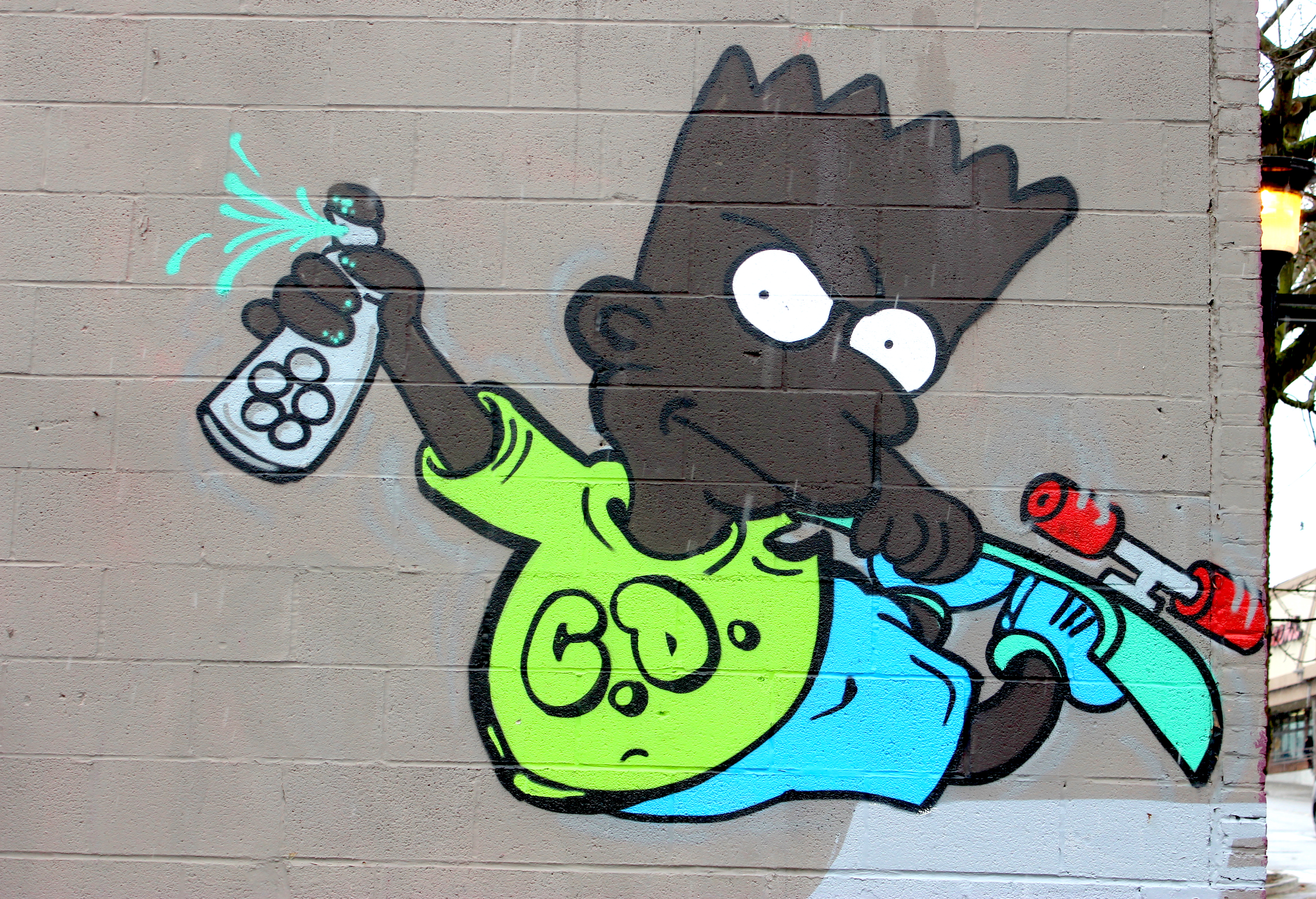Above: Buster Simpson explains his newer piece “Secured Embrace” to a passerby. He considers the piece a spiritual successor to his most famous work, “Woodman.”
Long before Phoenix Jones, there was Woodman.
In the mid-70s as urban renewal was reshaping the city, Seattle artist Buster Simpson would visit construction sites where major development or demolition was occurring. Dressed in a strange kind of hermit-wayfarer getup, Simpson would haunt these sites as his alter-ego, “Woodman.” The eco-superhero would methodically load wood onto himself piece by piece, bundling detritus from the construction sites on his back until he resembled an oak-loaded Quasimodo. The act served as a potent symbol—Woodman was literally carrying the weight of urban development and ecological destruction on his back.
“I would load the wood until I physically couldn’t hold anymore,” Simpson says. “When I would start wobbling from the weight it was very much like a dance.” Simpson says contact improvisation, a postmodern dance technique, was a major inspiration for Woodman’s movements. When Woodman couldn’t be present, Simpson would cut out the character’s silhouette and leave it as a spectral calling card in buildings that were slated to be demolished or at sites that had already been razed.
“I had to dignify this wonderful old growth wood that had become detritus,” Simpson says. “It sounds like an old man problem, but I feel it’s very important.”
Simpson’s “old man problems” are anything but. His new retrospective at the Frye, BUSTER SIMPSON // SURVEYOR, feels quite vital amidst Obama’s recent climate change address and the raging local debate over coal train exports. Serving as a document of integral Northwest ecological activism, the show takes viewers through Simpson’s fascinating catalogue of agitprop and protest art. Surveyor is oftentimes as funny as it is somber.
In his 1983 film Projecting Limestone Purge, Simpson takes on the role of a different yet heroic ecological warrior. In David-and-Goliath style, standing in the construction rubble where the condos of Battery Park City would later rise, Simpson slings rocks with the word “PURGE” written on them at the World Trade Center. With the half-naked Simpson and his primative slingshot, the film feels cleverly anachronistic—a stark collision between an ancient past and the imposing modern present.
While much of Simpson’s work is performative, his fascination with creating ecologically themed objects is evident throughout the show. Beyond the symbolic, Simpson’s more recent work attempts to create physical solutions to environmental problems. His 2013 pH Indicator Umbrella is exactly what’s advertised—an umbrella with a canvas constructed out of pH indicator paper. Through it’s use, ordinary people can determine the presence of acid rain by going about their day to day business.
The piece Simpson explains in the video above, Secured Embrace, is not only a floating sculpture, but also a civic-minded solution to deteriorating waterfront habitats that Simpson hopes the city will incorporate in the planned new downtown seawall and waterfront restoration.
What’s refreshing about Simpson is his ability to laugh through the tears as natural habitats and historic old structures disappear. He has a Gogot-like penchant for contorting tragedy into a nuanced sort of absurd comedy. As Simpson was leaving the Frye on Thursday evening, a woman stopped to inquire as to what exactly Secured Embrace is.
“It’s like a big teddy bear, or maybe a sumo wrestler that’s hugging a root wad,” he says, gesturing at the massive concrete structure tied to a tree.
“See what you can in it? Use your imagination,” them woman suggests to him.
“Well, actually,” Simpson says, “It’s intended to be functional.”








